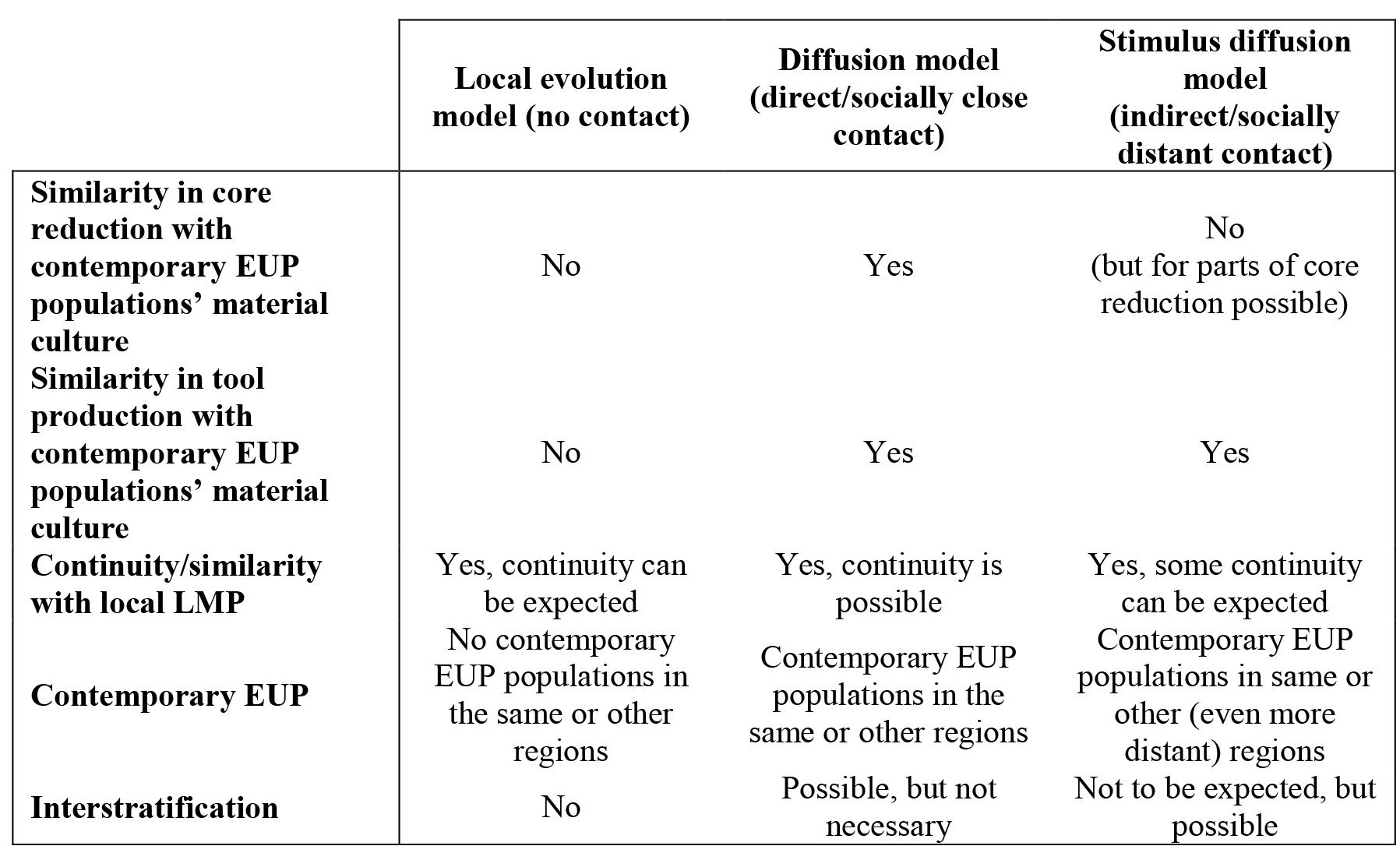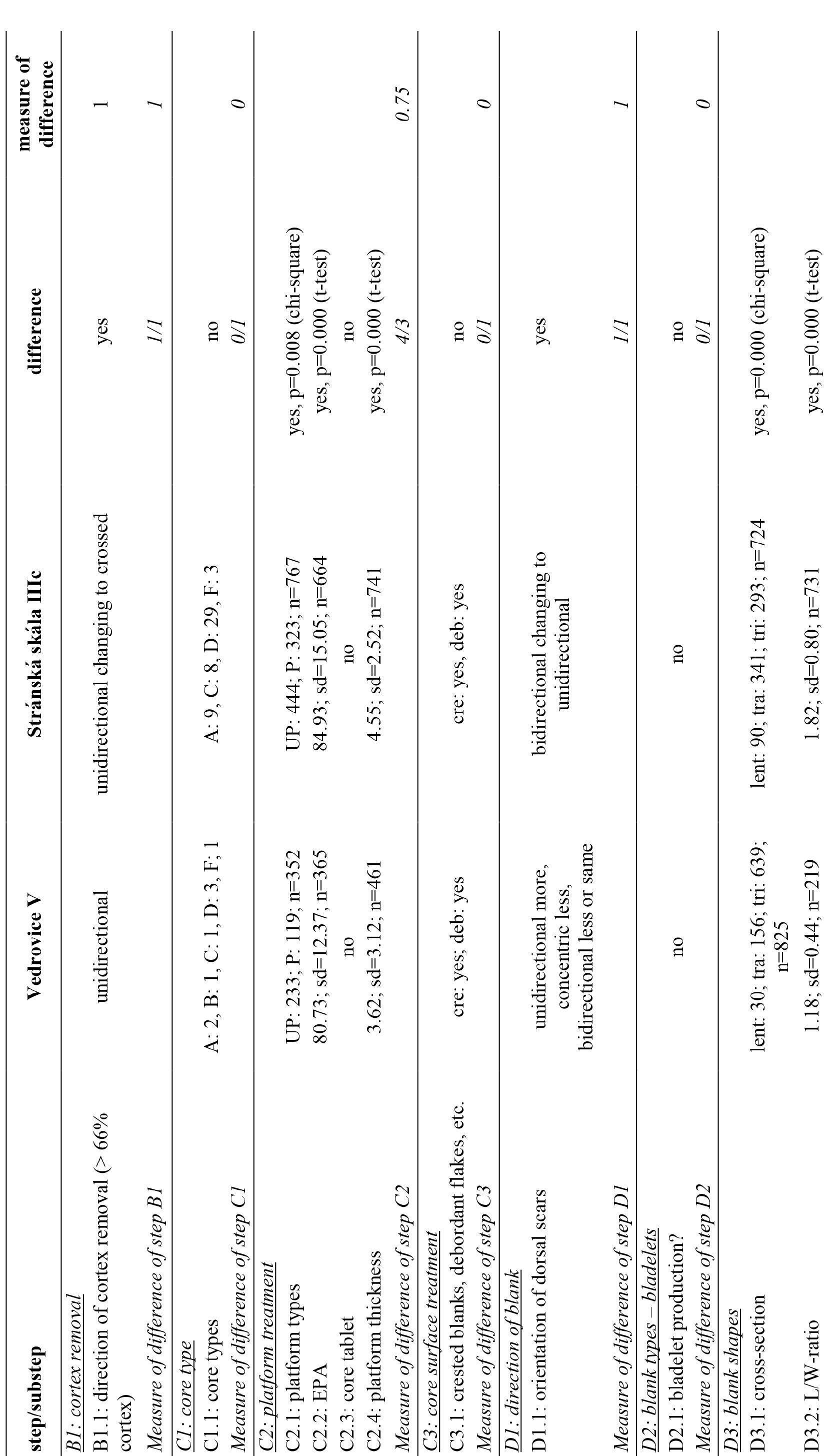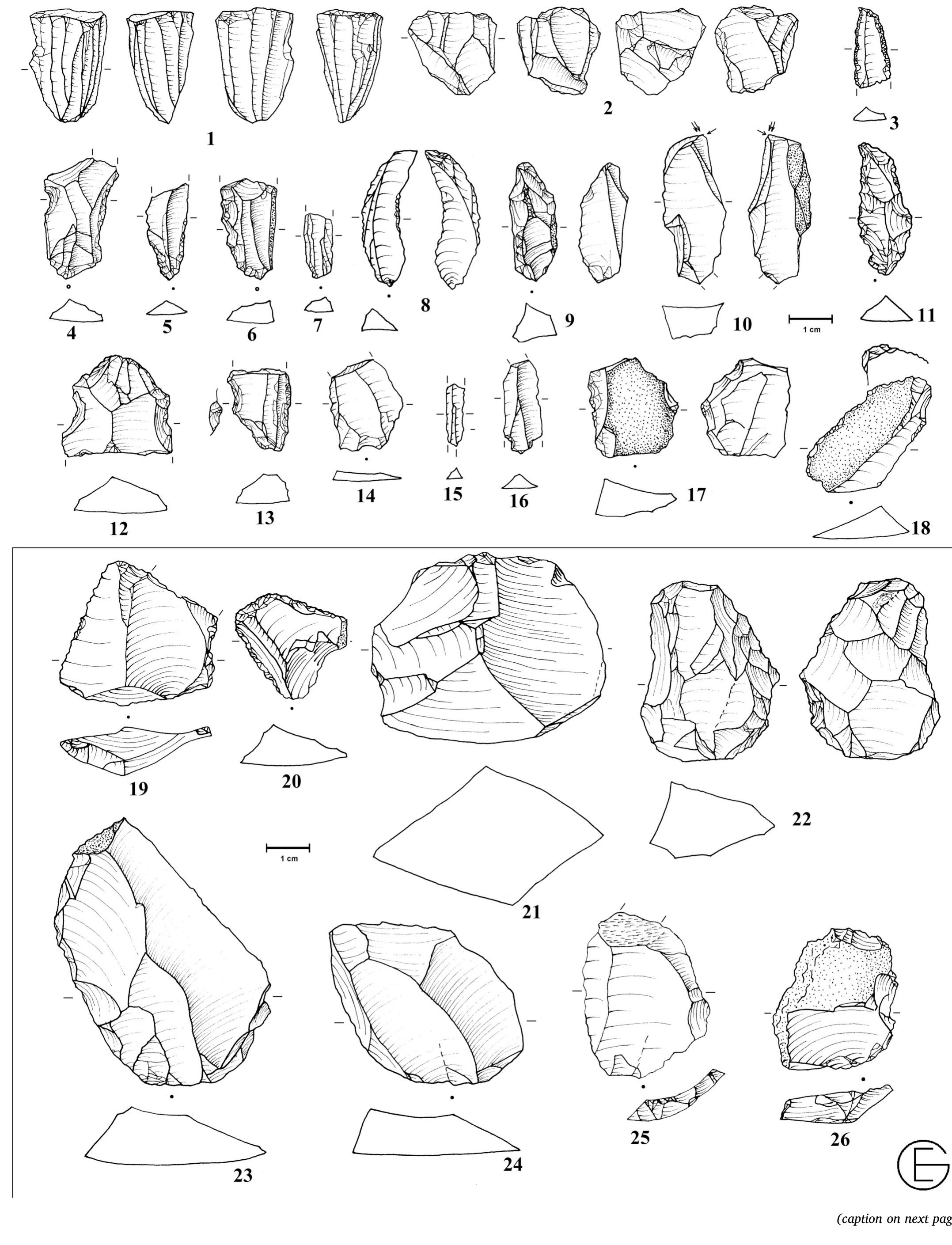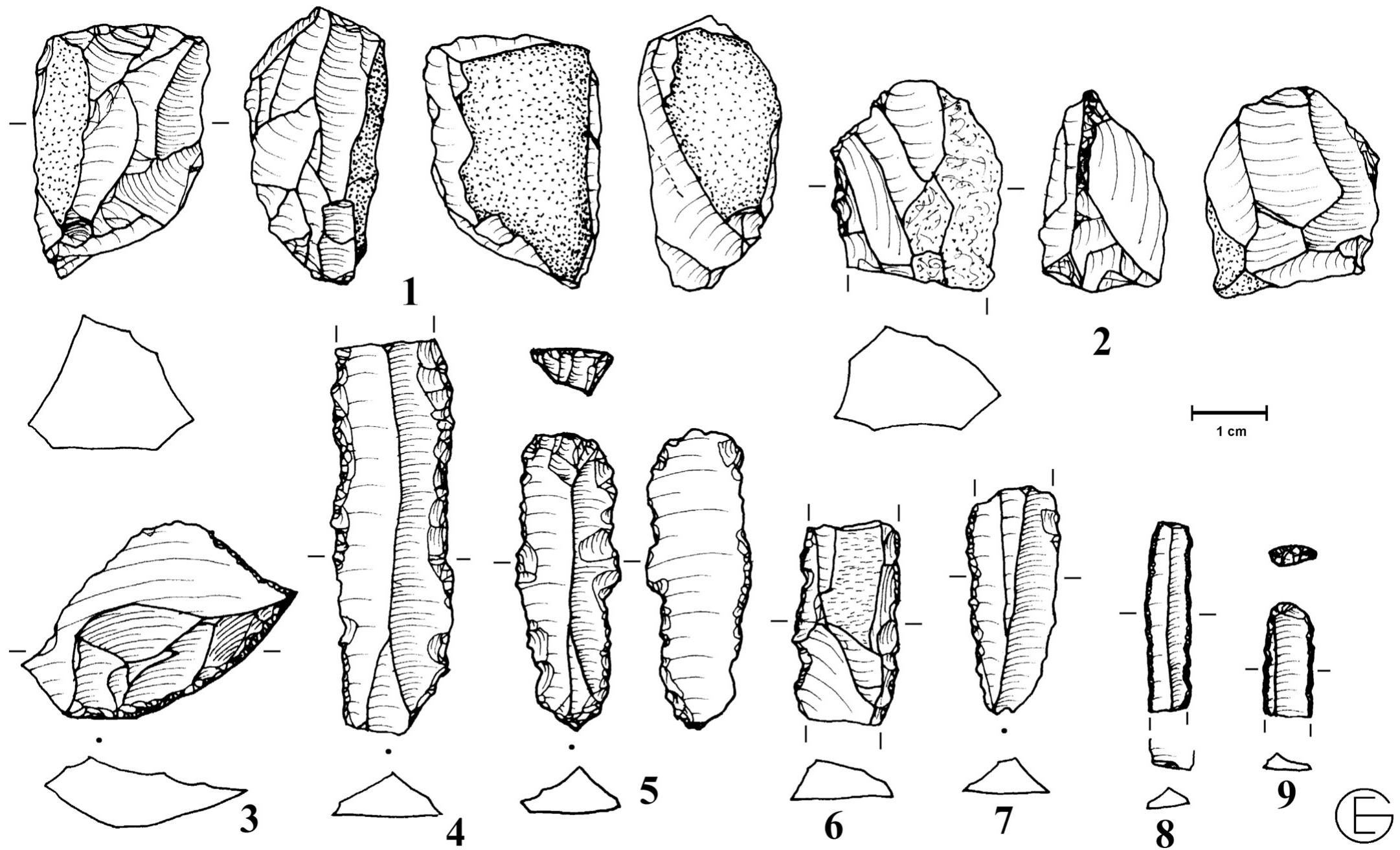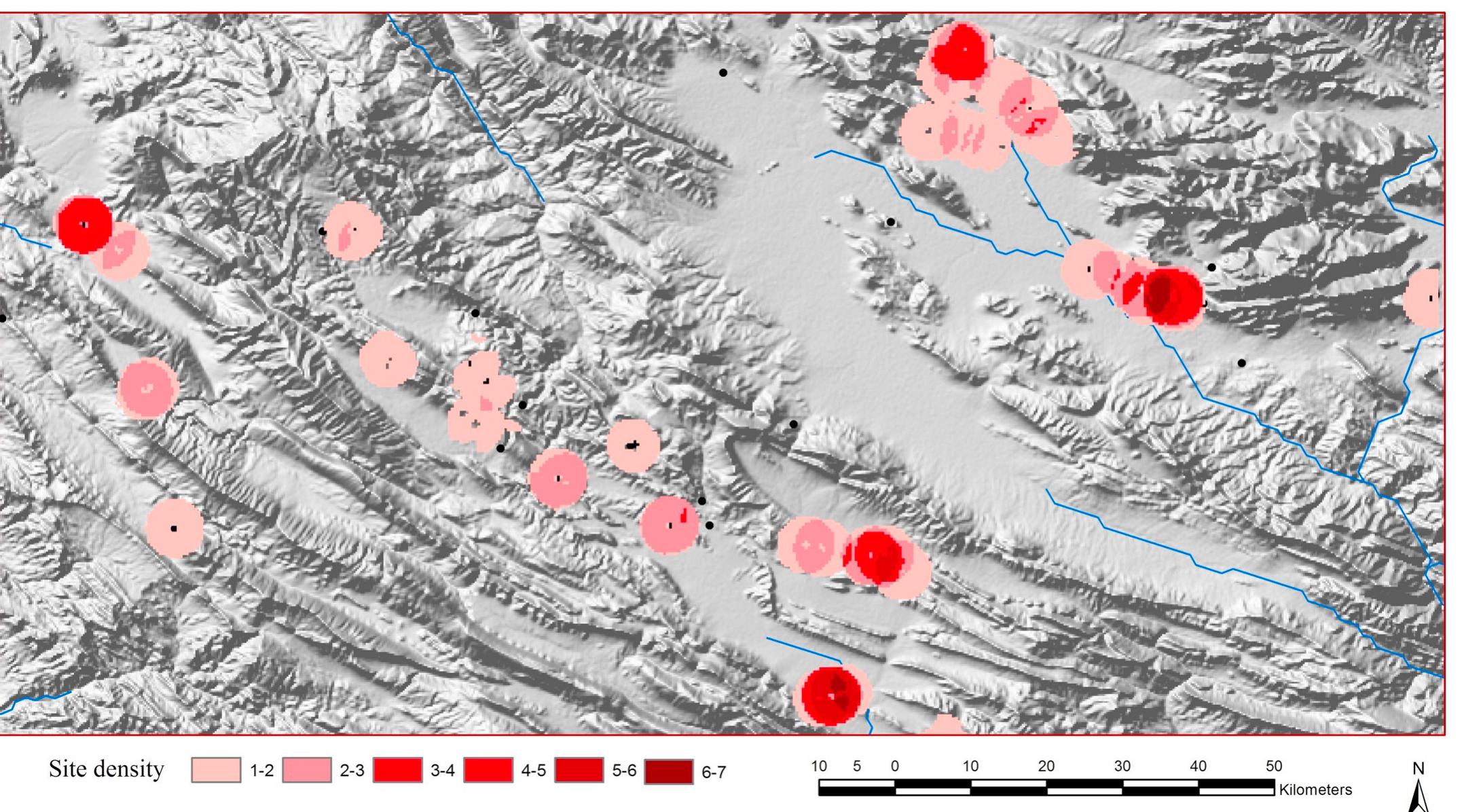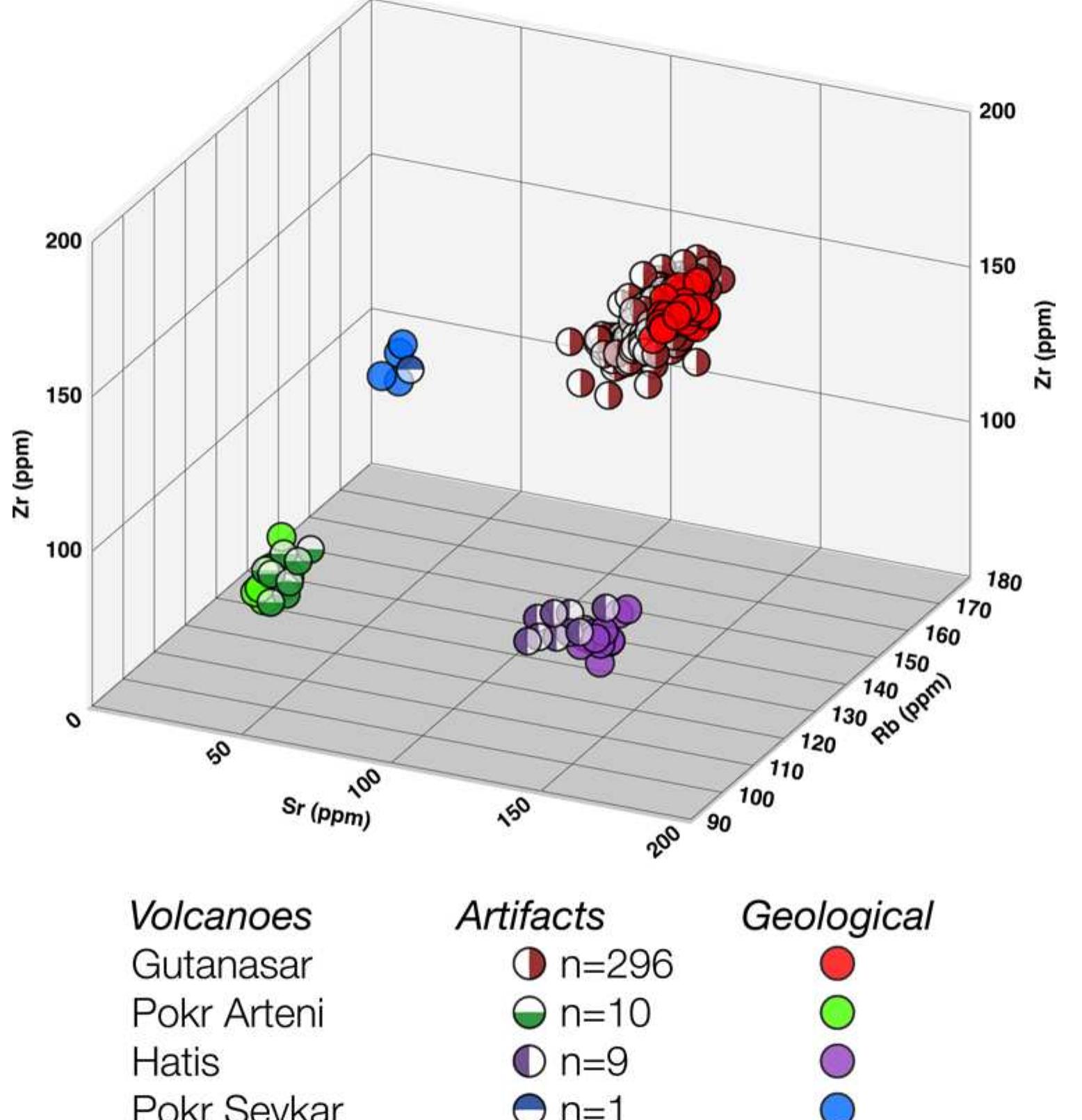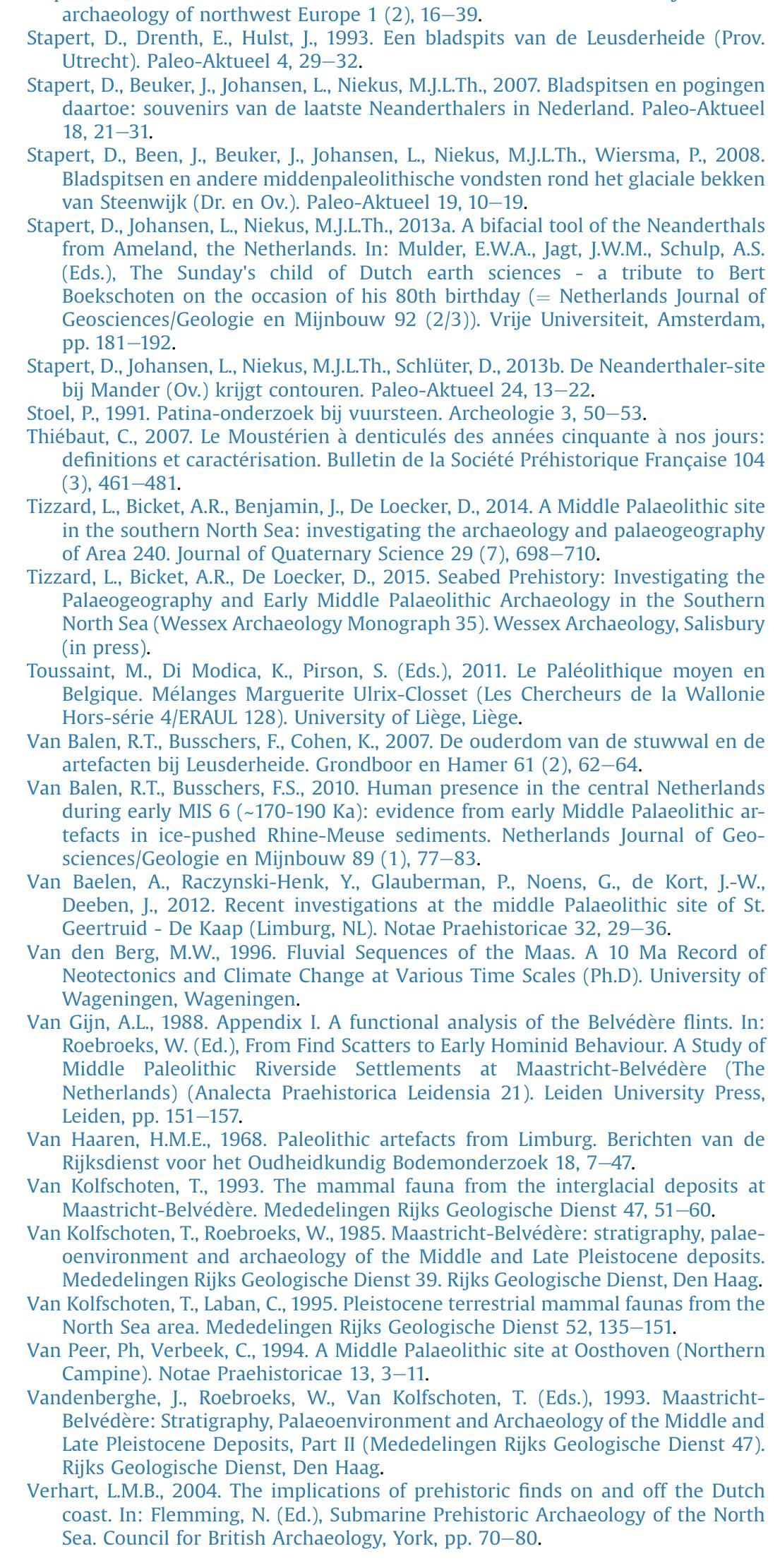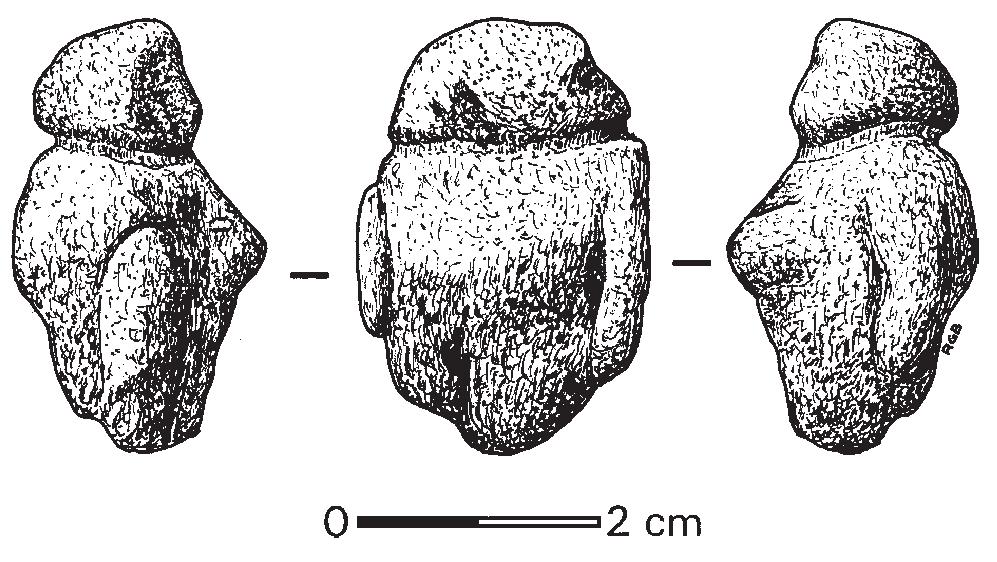Elena Rossoni-Notter, Olivier Notter, Suzanne Simone, Patrick Simon Balzi Rossi (Ventimiglia, Imperia): researches of the Museum of Prehistoric Anthropology of Monaco on the technical behaviour of the Acheulean... more
The chrono-cultural sequence of Cueva Bajondillo consists of 3 different phases: musterien, Upper Palaeolithic (aurignacian, gravettian and solutrean levels) and Neolithic. This paper deals with two aspects. First, the problem of the tufa... more
Use-wear and residue analyses have come to play a fundamental role in archaeological enquiries into the cultural biographies of past artefacts. Deployed either separately or in conjunction with one another, they have been turned by three... more
Estudo estatístico de um conjunto de espólio lítico da jazida de Santo Antão do Tojal (Loures, Lisboa), um acampamento temporário de caçadores-recolectores que terá sido utilizado mais intensamente no Paleolítico médio. Constatando o... more
Op 17 november 2016 overleed Dick C. Brinkhuizen (1946-2016), één van de ontdekkers van het belangrijke Neanderthaler kampement in de omgeving van Assen. In de loop der jaren heeft Dick op de vindplaats bijna 40 midden-paleolithische... more
RESUMEN: Se estudian los productos Levallois -soportes y núcleos-de los niveles II y III del Abrigo de la Quebrada. La atención se centra en establecer sus características, grado de transformación por el retoque y evaluación de las... more
Том содержит публикацию свода памятников среднего палеолита Донбасса. Рассчитан на специалистов в области первобытной археологии и истории, студентов и преподавателей ВУЗов, краеведов. Утвержден к печати Ученым советом Института... more
Desde el punto de vista de la tecnología el inicio del Paleolítico medio se caracterizó por la aparición del Modo técnico 3. La aparición de este Modo técnico tuvo lugar en Europa hace alrededor de 300 ka. El paso del Modo 2 al Modo 3 fue... more
This study presents and discusses a methodology to study population contact scenarios among Pleistocene hunter-gatherers. It applies this methodology to the Middle-to-Upper Palaeolithic transition in the Middle Danube region by testing... more
The retouching bone tools are characteristic items from european middle Paleolithic assemblages, so are they related with stone knapping. They are present in many sites from France, central-east Europe, and also the Iberian Peninsula.... more
The Middle and Upper Palaeolithic artifacts of the Zagros Mountains are relatively better understood than those in other parts of the Iranian Plateau. However, settlement systems, land use and Palaeolithic population dynamics for this... more
A Bükk-vidék középtáj része. A kistáj kiemelt karsztos fennsík, tszf-i magassága 425-959 m között változik, DNy-ról ÉK felé csökken. A Garadna-völgy két részre osztja (Dövényi Zoltán 2010. 736). Heves megye területére eső barlangok Eger,... more
Late 2006 a survey project was initiated by the Groningen Institute of Archaeology and the Drents Museum. The project, which is currently directed by the Stone Foundation, was aimed at discovering Middle Palaeolithic surface scatters on... more
C’erano elefanti in Italia prima dell'arrivo di Pirro? E 'difficile immaginare che due o trecentomila anni fa la campagna romana era attraversato da branchi di elefanti, ma il territorio di Roma è tra i più ricchi al mondo per l’enorme... more
The book was published in Moscow in 1978 / Книга была издана в Москве в 1978 году.
Bibliografische Information der Deutschen Nationalbibliothek Die Deutsche Nationalbibliothek verzeichnet diese Publikation in der Deutschen Nationalbibliografie; detaillierte bibliografische Daten sind im Internet über http://dnb.d-nb.de... more
The replacement hypothesis proposes that “modern humans” evolved only in sub-Saharan Africa, through a speciation event rendering them unable to breed with other hominins. They then spread throughout Africa, then to Asia, Australia and... more
Kniha byla vydána v Praze roku 2005, ISBN:80-86912-04-3 / The book was published in Prague in 2005, ISBN: 80-86912-04-3
New excavations at Contrebandiers Cave, Morocco, began in 2007 and continued through 2010. This site, originally excavated by Roche in the 1950s, contained deposits with Aterian, Iberomaurusian, and Neolithic materials, although the... more
Палеолитические люди изначально были охотниками. Возникнув в Африке более 2,5 млн лет тому назад, они постепенно на протяжении сотен тысячелетий осваивали обширные пространства Евразии, при этом расселялись преимущественно в тех местах и... more
"Where, O death, is your victory?" Statistical reconstruction of earliest human beliefs related to death. It is not clear if modern man believed in an afterlife before the Out of Africa. This paper will show that a careful statistical... more
I have been writing about Paleolithic basket weaving technology for 2 years now. In this article, I attempt to show that there was an intermediate period in the development of the technology when an understanding of structure and... more
This paper begins by exploring the role of fermented and deliberately rotted (putrefied) meat, fish, and fat in the diet of modern hunters and gatherers throughout the arctic and subarctic. These practices partially 'pre-digest' the high... more
We present a concise overview of Middle Palaeolithic research in the Netherlands. The area, which is situated along the northwestern edge of the known Neanderthal world, is very divers in terms of geological development. As a result of... more
von Hermann Schaaflhausen 1883 auf dem Martinsberg in Andernach noch in das 19. Jh. zurückreichen, konnte eine intensive Forschung zum Paläolithikum eßt fast 100 Jahre später mit der Entdeckung des Fundplatzes Neuwied-Gönnersdorf und der... more
Focal topics for volumes in the series will include systematic paleontology of all vertebrates (from agnathans to humans), phylogeny reconstruction, functional morphology, Paleolithic archaeology, taphonomy, geochronology, historical... more
In deze rapportage worden de resultaten besproken van een inventarisatie van 24 privécollecties met in totaal 1203 (vuur)stenen artefacten waarvan het merendeel afkomstig is uit de megasuppletie (2011) van de Zandmotor voor de kust bij... more
A comprehensive review of evidence of very early palaeoart covering all continents reveals significant misconceptions in the dominant models of ‘art’ origins. The traditional preoccupation with predominantly zoomorphic, figurative... more
One of Binford's most important and influential contributions was his development of utility indices-rankings of ungulate body parts according to their meat, marrow, and grease value. Binford's immediate objective was to model the... more
Individual subscription rates for 2014: $76 print ϩ electronic, $45 print-only, $44 e-only. Institutional print ϩ electronic and e-only subscriptions are available through JSTOR's Current Scholarship Program and include unlimited online... more
The collection "Art and Religion of Ancient Societies" is a continuation of the series of the scientific publications which is devoted to the problems of study of the spiritual culture in the primitive societies. The previous edition "Art... more
The Palaeolithic record of Greece remains highly fragmented and discontinuous in both space and time. Nevertheless, new surveys and excavations, along with the revisiting of known sites or old collections, and the conduction of lithic and... more
12 original articles concerning the Paleolithic development of woven-fiber technology and its use in early civilizations. This 300+ page eBook is illustrated with over 250 photographs and pictures. More than 100 years ago Gustave Chauvet... more
A century of research has led to the recognition of multiple levels of technological variability in the Levantine Middle Paleolithic (MP) that cannot be resolved through single-cause explanatory models. Recent ecological models argue... more

